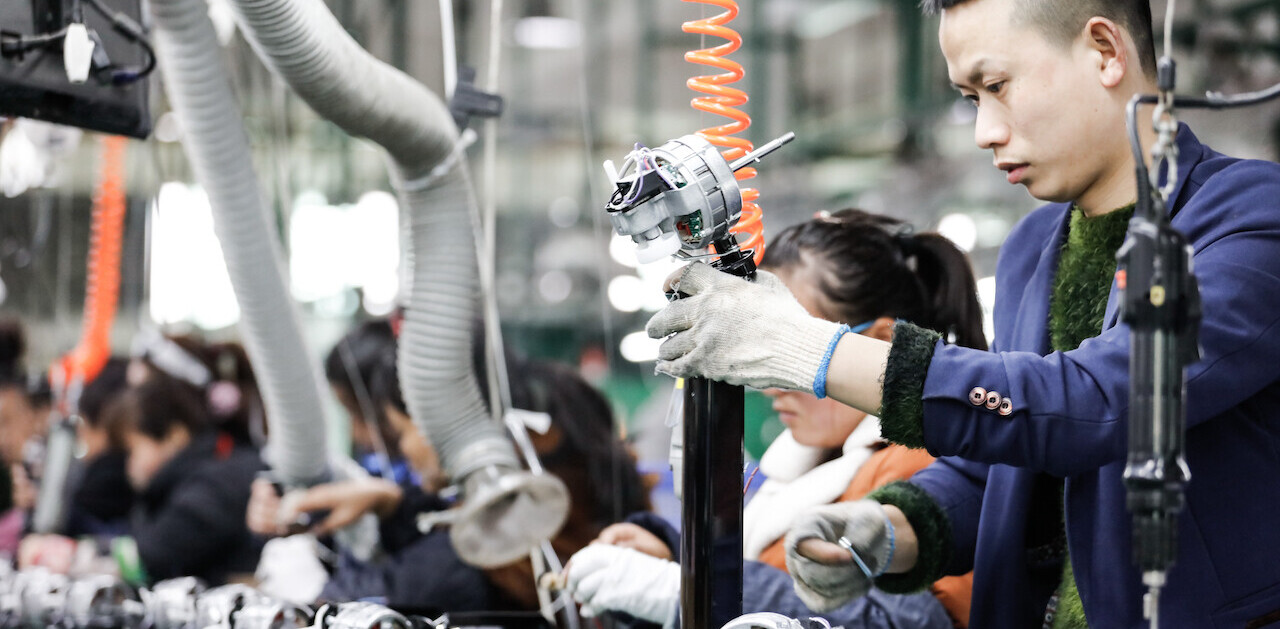
Although it’s tempting to keep adding new features, at some point, you need redirect your team’s resources and focus on refining your core product instead. But how do you know when that time has come? To find out, I asked 10 entrepreneurs from YEC the following question:
How do you know it’s time to STOP building new features for your product and only focus on what you already have?
Their best answers are below:
1. When Your Audience Tells You To
 Don’t underestimate the power of the survey to help you improve. Chances are that what you think is important is not what your audience thinks is important. Be sure to get feedback and then continue to add based on beta testing. Remember that if you address huge improvements, you can always make this a premium version that costs more. – Nicole Munoz, Start Ranking Now
Don’t underestimate the power of the survey to help you improve. Chances are that what you think is important is not what your audience thinks is important. Be sure to get feedback and then continue to add based on beta testing. Remember that if you address huge improvements, you can always make this a premium version that costs more. – Nicole Munoz, Start Ranking Now
2. When You’ve Run Out of Pain Points
 If you’re thinking in features, you’ve lost. You should be thinking in terms of “what are the problems my customers have and how can I solve them?” That will allow you to look at your entire solution and stay focused on delivering a remarkable product. It also makes it easier for your product teams, as people get less attached to “their features” and stay focused on the vision of how they’re enhancing the lives of their customers. – Alexandra Skey, Rallyon
If you’re thinking in features, you’ve lost. You should be thinking in terms of “what are the problems my customers have and how can I solve them?” That will allow you to look at your entire solution and stay focused on delivering a remarkable product. It also makes it easier for your product teams, as people get less attached to “their features” and stay focused on the vision of how they’re enhancing the lives of their customers. – Alexandra Skey, Rallyon
3. When A/B Testing Goes Wrong
 When every A/B test adding a popularly-requested feature results in decreases in conversion and retention, then you should stop building new features. Most users prefer simple experiences; that desire is multiplied on mobile. Too many features clutter the experience and dilute the power of any single one. It’s important to test your new features to see if they drive the results that you and your users expect. If not, you might be hearing from a vocal minority of users who are not indicative of the larger base. The best apps are laser-focused on their core audiences. You will have to make tradeoffs if you try to serve everybody. – Andrew Laffoon, Mixbook
When every A/B test adding a popularly-requested feature results in decreases in conversion and retention, then you should stop building new features. Most users prefer simple experiences; that desire is multiplied on mobile. Too many features clutter the experience and dilute the power of any single one. It’s important to test your new features to see if they drive the results that you and your users expect. If not, you might be hearing from a vocal minority of users who are not indicative of the larger base. The best apps are laser-focused on their core audiences. You will have to make tradeoffs if you try to serve everybody. – Andrew Laffoon, Mixbook
4. When You’ve Lost Sight of Your Purpose
 Your main focus needs to remain on the original purpose of your product. In today’s feature-crazed market, it’s too easy to become consumed by feature creation. Stop and test your features to determine whether they actually add value for your customers. Otherwise, you are merely wasting time and resources. – Jason Thanh La, Merchant Service Group, LLC & K5 Ventures
Your main focus needs to remain on the original purpose of your product. In today’s feature-crazed market, it’s too easy to become consumed by feature creation. Stop and test your features to determine whether they actually add value for your customers. Otherwise, you are merely wasting time and resources. – Jason Thanh La, Merchant Service Group, LLC & K5 Ventures
5. When You Have a “Minimum Lovable Product”
 It’s incredibly easy to get caught up in feature development. We’ve seen teams postpone launching their product for months because one person mentioned they would like to see a specific feature. In order to have a successful product though, it only needs to solve one problem in a way that brings your users back to use it again and again. This is what I call a “Minimum Lovable Product” (MLP). Focusing on new features often degrades from your core product, the best thing to do is get your MLP out into the world and build new features that your active customers are asking for. – Tony Scherba, Yeti
It’s incredibly easy to get caught up in feature development. We’ve seen teams postpone launching their product for months because one person mentioned they would like to see a specific feature. In order to have a successful product though, it only needs to solve one problem in a way that brings your users back to use it again and again. This is what I call a “Minimum Lovable Product” (MLP). Focusing on new features often degrades from your core product, the best thing to do is get your MLP out into the world and build new features that your active customers are asking for. – Tony Scherba, Yeti
6. When It’s Not Backed by Actual Feedback
 At Hubstaff, we pursue customer driven development. Although we won’t build a new feature based on one isolated feedback item, we also know that it doesn’t take much feedback to indicate a problem that needs to be solved. The flip side is that if there’s a total absence of feedback, we will not create a feature to solve a nonexistent pain point. You have to trust that if your customers are paying money for your product, they’ll speak up when the product isn’t delivering its anticipated value. In the meantime, there’s always plenty to do debugging and refining the product itself. – Dave Nevogt, Hubstaff.com
At Hubstaff, we pursue customer driven development. Although we won’t build a new feature based on one isolated feedback item, we also know that it doesn’t take much feedback to indicate a problem that needs to be solved. The flip side is that if there’s a total absence of feedback, we will not create a feature to solve a nonexistent pain point. You have to trust that if your customers are paying money for your product, they’ll speak up when the product isn’t delivering its anticipated value. In the meantime, there’s always plenty to do debugging and refining the product itself. – Dave Nevogt, Hubstaff.com
7. When Your Customers Don’t Know What You Do
 It’s time to stop building new features when your customers can’t even answer the simple question “what does this business do?” Stick to your core business and only add when it makes sense and won’t confuse your customers. – Brooke Bergman, Allied Business Network Inc.
It’s time to stop building new features when your customers can’t even answer the simple question “what does this business do?” Stick to your core business and only add when it makes sense and won’t confuse your customers. – Brooke Bergman, Allied Business Network Inc.
8. When the Product Ceases to Be Attractive
 Most people (when quizzed) find a tablet to be much more sensible for their households than a desktop, because desktops have too much going on. Taking a page out of this book, I think more businesses should think about their customer’s needs before adding a never-ending list of features that customers may or may not know how to integrate into their routine. I think the worst case scenario is spending money before running a market analysis on the product, and the best case scenario is creating an all-new product with those features that you’d like to test out on the market. – Cody McLain, SupportNinja
Most people (when quizzed) find a tablet to be much more sensible for their households than a desktop, because desktops have too much going on. Taking a page out of this book, I think more businesses should think about their customer’s needs before adding a never-ending list of features that customers may or may not know how to integrate into their routine. I think the worst case scenario is spending money before running a market analysis on the product, and the best case scenario is creating an all-new product with those features that you’d like to test out on the market. – Cody McLain, SupportNinja
9. When Money Isn’t Coming In
 When your customers stop paying you for your new services/features, it’s time to make your core product or service a lot better. Your customers not paying, or not paying more for extra features, doesn’t help you pay your bills. Focus on what’s important to your customers and only build features that they are willing to pay for. For example: When I was building out the freelancer section of Due, we had 200+ customers request a couple of features, so we built them. Turns out only three of the 200 people were willing to pay $5/month more to get that feature. Don’t let that happen to you. – John Rampton, Due
When your customers stop paying you for your new services/features, it’s time to make your core product or service a lot better. Your customers not paying, or not paying more for extra features, doesn’t help you pay your bills. Focus on what’s important to your customers and only build features that they are willing to pay for. For example: When I was building out the freelancer section of Due, we had 200+ customers request a couple of features, so we built them. Turns out only three of the 200 people were willing to pay $5/month more to get that feature. Don’t let that happen to you. – John Rampton, Due
10. When You’re Satisfied (aka: Never)
 You should never stop thinking about or building new features. It doesn’t mean that you should have too many features in your product. Rather, you should always be on lookout for replacing some of the features that do not perform up to your expectations. If you feel you have too many features, you probably do, and likely most of them aren’t working. Re-evaluate them, but never stop thinking about new stuff. Innovation is the lifeblood of a startup, so keep it flowing. – Ashu Dubey, 12 Labs
You should never stop thinking about or building new features. It doesn’t mean that you should have too many features in your product. Rather, you should always be on lookout for replacing some of the features that do not perform up to your expectations. If you feel you have too many features, you probably do, and likely most of them aren’t working. Re-evaluate them, but never stop thinking about new stuff. Innovation is the lifeblood of a startup, so keep it flowing. – Ashu Dubey, 12 Labs
Read Next: 10 usability considerations for your mobile app
Image credit: Shutterstock
Get the TNW newsletter
Get the most important tech news in your inbox each week.




